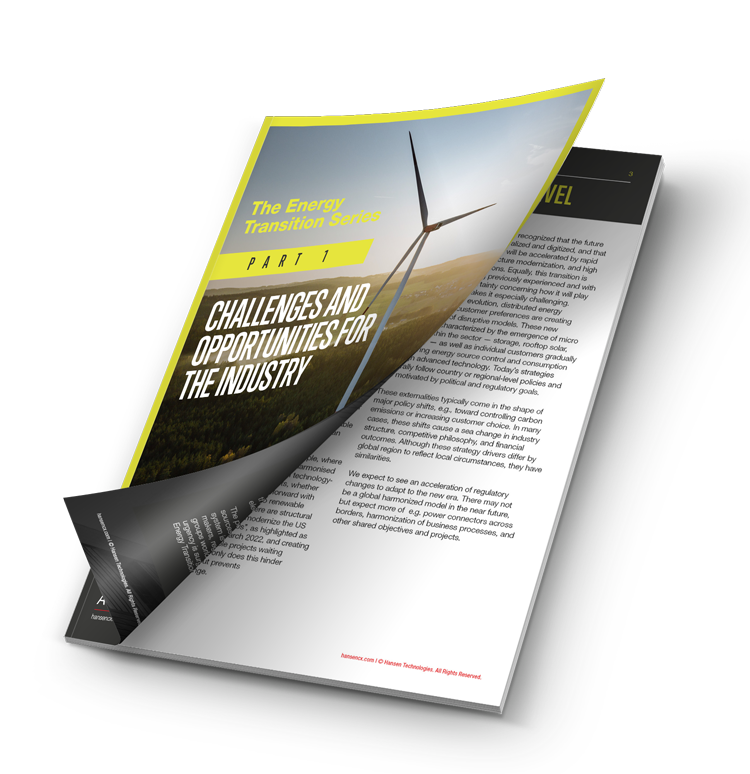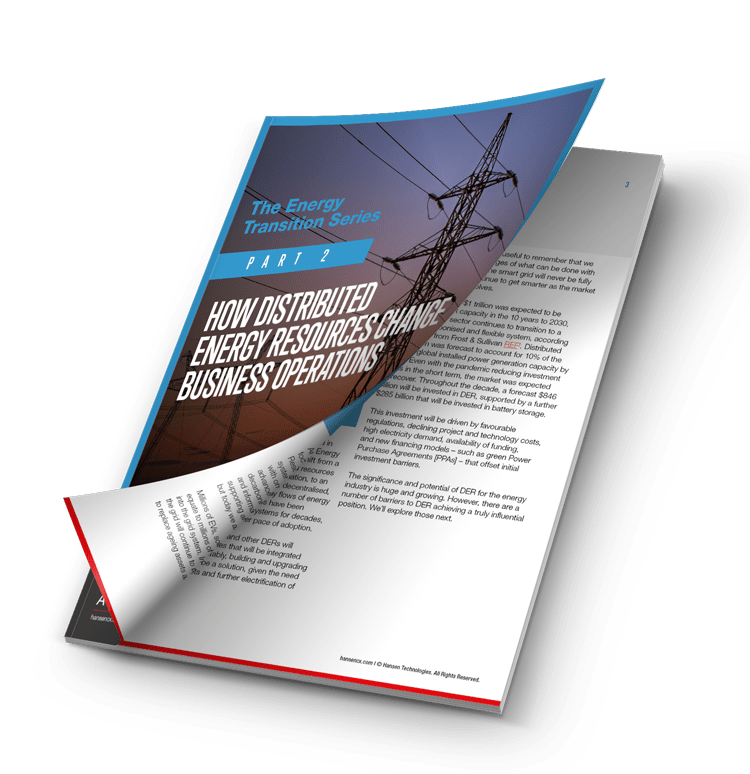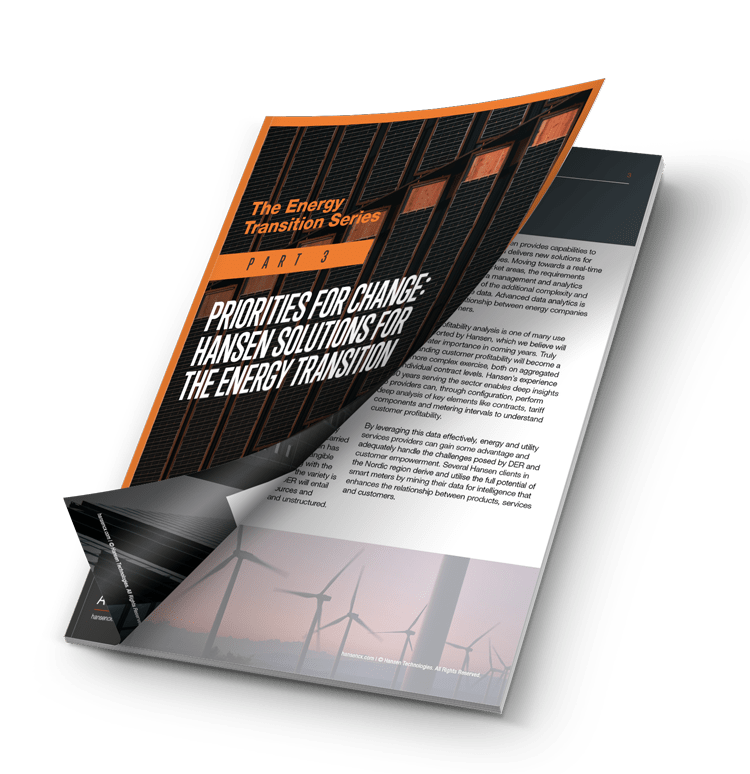Digital technologies have been supporting and enabling energy systems for decades – just as Hansen has been dedicated to the energy market for 50+ years. But now we are rapidly moving from a system characterized by large, centralized resources with one-way flows of energy and information, to an advanced grid market with distributed, decentralized, decarbonized resources with two-way flows of energy and information.
And this Energy Revolution – or Evolution as we prefer to think of it – is a defining characteristic of the Energy Transition. It’s as much a factor as the transformation from fossil-based systems of energy production and consumption to renewable energy sources; the aim to reduce emissions through decarbonization; or the advance of electrification and energy storage solutions.
The potential for decentralized flexibility sources to help maintain a reliable electricity system is commanding the attention of policy makers, regulatory bodies, and industry groups worldwide – and the pace and the urgency is surging as we move towards the Energy Transition.
Transition can be used to create opportunities for all market participants.
“Energy Transition” has entered the mainstream. Terms like sustainability or decarbonization – “net zero”, “climate-neutral”, ESG even – have gained a recognition barely imaginable only a few years ago, driven by a wave of environmental awareness. But we’ve also faced a string of upheavals in such a short time. The pandemic, disrupting energy supply, demand, and prices. Then the price shocks early in ’21 – reaching staggering levels as the year went on. Up to the explosive events of 2022 that have brought home how vulnerable – and how vital – our energy security is.
In the plainest and most practical terms, it’s made everyone – commercial, industrial or consumer – painfully aware of cost and supply threats and the need to mitigate them through greater efficiency and control. Along with such challenges, these key drivers for Energy Transition can be used to create immense opportunities for all market participants.
Business model redesign is accelerating with the increasing speed of energy technology advancement and the arrival of non-traditional competitors into the sector around the globe. While digitalization has become a key enabler for new services and products, enriching customer experience and making life smarter.
The pursuit of low carbon options in other aspects of the energy sector, are set to change the shape of the overall demand on the power system and at the same time introduce new sources of flexibility. The emergence of business applications and monetisation of DER depends on many factors, such as broader electricity market design and energy policy, regional resource availability and the penetration level of DER.
Customers at the heart of the change
In today’s era of the insatiable ‘chargeable-life’ with an incessant need for uninterrupted everywhere-connectivity, traditional energy and utilities companies realises the importance of customer engagement. Rapidly evolving expectations influenced by other industries, self-serving and invisible customer SLAs, distributed energy resources, personalisation, and a core shift of power and choice – from the seller to the buyer – has created a need for transformative change and a new type of experience provider. Customers, commercial and industrial players transform to become vital parts of the energy market, they will be at the heart of change.
Utilities look at themselves differently to succeed in this new marketplace and achieving mass personalisation with a lifestyle experience approach is the key to that. They need to create, deliver, and engage services seamlessly, in an automated way and without error across all their channels. Historically the market dynamic been about selling and connecting through a centralised driven process. Now the game is changing to become decentralised and empowering the customer’s choice. Now it’s time for the industry to unlock the potential of a customer-centric and data-driven business, implementing an IT architecture where customer service and product innovation becomes the DNA for customer experience.
If you would like to hear more about Hansen’s view on where we see trends accelerating and the technologies supporting those opportunities, please download our 3-part series of reports on the Energy Transition.


